For several years Anne Schippel has been the business banker
For several years, Anne Schippel has been the business banker for the company, Dry Supply. After reviewing the company balance sheet, she makes the following observations. Three major asset accounts are on the books of Dry Supply: accounts receivable, inventory, and fixed assets. the amount of accounts receivable and inventory are characteristic of a wholesaler.
Please Review the Dry Supply Income Statement Spread and Balance Sheet Spread on the next two pages and follow the instructions below:
INSTRUCTIONS:
For each of Anne Schippel\'s observations listed below, develop questions you would ask Dry Supply in order to complete your balance sheet analysis.
Observation 1: Accounts receivable have remained in the $114,000 to $118,000 range
Observation 2: Inventory decreased during the period, while sales and accounts receivable increased.
Observation 3: fixed assets increased from $130,000 On December 31, 20 xx, to $163,000 on December 31, 20xy
Observation 4: Accounts payable showed a larger decrease than inventory. Some of the decrease is to be expected because inventory usually is financed by trade creditors.
Observation 5: Loans to shareholders has grown from $48,000 on December 31, 20xx, to $67,000 on December 31, 20xy.
Observation 6: With regard to equity, what two questions immediately come to mind?
Balance Sheet Spread: DRY SUPPLY
Common-sized report
($ in $000S) Review 12/31/20xx Review 12/31/20xy Review 12/31/20xz
Assets
Amount
%
Amount
%
Amount
%
Cash
$3
1.2
$ 12
4.6
$ 22
8.1
Accounts Receivable
114
46.9
118
45.4
117
43.3
Less:Allowance for doubtful accounts
5
2.1
5
1.9
5
1.9
Net Accounts Receivable
109
44.9
113
43.5
112
41.5
Inventory
73
30
72
27.7
67
24.8
Total Current Assets
185
76.1
197
75.8
201
74.4
Furniture and fixtures
76
31.3
75
28.8
78
28.9
Leasehold Improvements
1
.4
1
.4
0
0.0
Transportation Equipment
53
218
70
26.9
85
31.5
Gross Fixed Assets
130
53.5
146
56.2
163
60.4
Less: Accum. Depreciation
85
35
97
37.3
110
40.7
Net Fixed Assets
45
18.5
49
18.8
53
19.6
Cash-Value Life Insurance
13
5.3
14
5.4
16
5.9
Total Assets
$243
100
$260
100
$270
100
Review 12/31/20xx Review 12/31/20xy Review 12/31/20xz
Liabilities
Amount
%
Amount
%
Amount
%
Notes Payable bank short- term
$81
33.3
$68
26.2
$59
21.8
Accounts payable-trade
42
17.3
46
17.7
31
11.5
Income taxes payable
5
2.1
6
2.3
7
2.6
Accrued bonuses
10
4.1
11
4.2
12
4.4
Total current liabilities
138
56.8
131
50.4
109
40.4
Subordinated debt officers
48
19.8
58
22.3
67
24.8
Total liabilities
186
76.5
189
72.7
176
65.2
Net Worth
Common stock
2
0.8
2
.8
2
.7
Retained earnings
55
22.6
69
26.5
92.
34.1
Total net worth
57
23.5
71
27.3
94
34.8
Total liabilities and net worth
243
100
260
100
270
100
Income Statement Spread: DRY SUPPLY
Review 20xx Review 20xy Review 20xz
Amount
%
Amount
%
Amount
%
Net sales
895
100
937
100
918
100
Costs of goods sold
645
72.1
667
71.2
631
68.7
Gross profit
250
27.9
270
28.8
287
31.3
Selling, Gen. And admin. Expense
157
17.5
173
18.5
180
19.6
Officer’s compensation
36
4
31
3.3
28
3.1
Rent Expenses
15
1.7
18
1.9
20
2.2
Bad Debt Expense
2
.2
1
.1
0
0
Profit sharing expense
7
.8
7
.7
0
0
Depreciation Expense
12
1.3
12
1.3
13
1.4
Total operating expense
229
25.6
242
25.8
241
26.3
Operating income
21
2.3
28
3.
46
5
Other income
0
0
0
0
0
0
Interest income
2
.2
2
.2
2
.2
Rental income
3
.3
3
.3
3
.3
Interest expense
6
.7
7
.7
11
1.2
Net profit before tax
20
2.2
26
2.8
40
4.4
Taxes
11
1.2
12
1.3
17
1.9
Net profit after tax
9
1
14
1.5
23
2.5
| Assets | Amount | % | Amount | % | Amount | % |
| Cash | $3 | 1.2 | $ 12 | 4.6 | $ 22 | 8.1 |
| Accounts Receivable | 114 | 46.9 | 118 | 45.4 | 117 | 43.3 |
| Less:Allowance for doubtful accounts | 5 | 2.1 | 5 | 1.9 | 5 | 1.9 |
| Net Accounts Receivable | 109 | 44.9 | 113 | 43.5 | 112 | 41.5 |
| Inventory | 73 | 30 | 72 | 27.7 | 67 | 24.8 |
| Total Current Assets | 185 | 76.1 | 197 | 75.8 | 201 | 74.4 |
| Furniture and fixtures | 76 | 31.3 | 75 | 28.8 | 78 | 28.9 |
| Leasehold Improvements | 1 | .4 | 1 | .4 | 0 | 0.0 |
| Transportation Equipment | 53 | 218 | 70 | 26.9 | 85 | 31.5 |
| Gross Fixed Assets | 130 | 53.5 | 146 | 56.2 | 163 | 60.4 |
| Less: Accum. Depreciation | 85 | 35 | 97 | 37.3 | 110 | 40.7 |
| Net Fixed Assets | 45 | 18.5 | 49 | 18.8 | 53 | 19.6 |
| Cash-Value Life Insurance | 13 | 5.3 | 14 | 5.4 | 16 | 5.9 |
| Total Assets | $243 | 100 | $260 | 100 | $270 | 100 |
Solution
1 Accounts Receivable: Increase in Accounts receivable is 3.5% in year 2 and 2.6% in year 3. This corresponds to increase in sales; sales increase in Year 2 is 4.6% and increase in year 3 is 2.6% - When investment in fixed assets in year 2 has increased by 8.89%, why this has not translated into similar increase in sales? 2 Inventory decreased while, sales and receivable increased: - When sales is increasing even though marginally, why the strategy of reduced inventory is being followed? - Will the reduced inventory levels (there is a steep reduction in year 3, by almost 8%) has impacted the service delivery to customers, by creating a \"stockout\" situation? 3 Fixed assets increased from $130,000 to $163000. -when Gross fixed assets has increased in year 2 (from year 1 levels), by 16k$ (12%), mainly in transportation equipments, this should have significantly impacted in the reduction of COGS (cost of goods sold). Whereas, COGS has remained almost at the same level (72%) to sales. Why? 4 Accounts payable showed a larger decrease than inventory: - The percentage reduction in inventory in Year 2 is 1.5% and in year 3 is 8.3%, compared to year 1. However trade creditors have reduced to 73.8% in year 3, meaning significant payment was made to reduce the trade liability. As it is a interest free source of finance, why this is not availed, particularly when the trend of sales is increasing? - The above is an anomoly, when the company is incurring interest expense on its borrowed funds. Why? 5 Loan from subordinated officers have increased from 48000$ to $67000, in 2 years. What are the terms & covenants subject to which it was taken? what is the purpose of such loan? 6 On review of Equity: - When PAT increase in year 2 is $5000, how retained earnings has increased by $14000? - When Equity is increasing, why there was no steps taken for commensurate reduction in liabilities?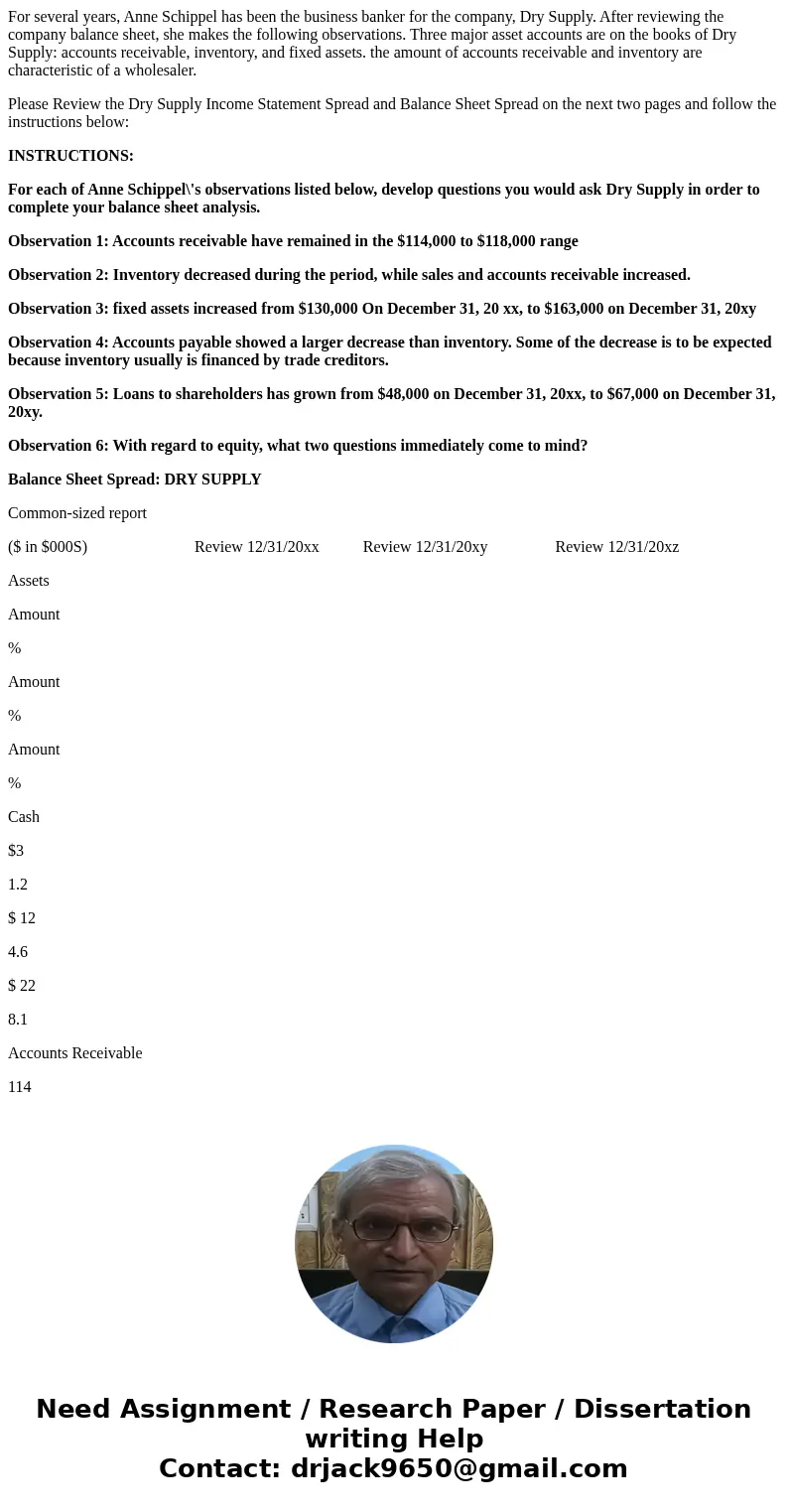
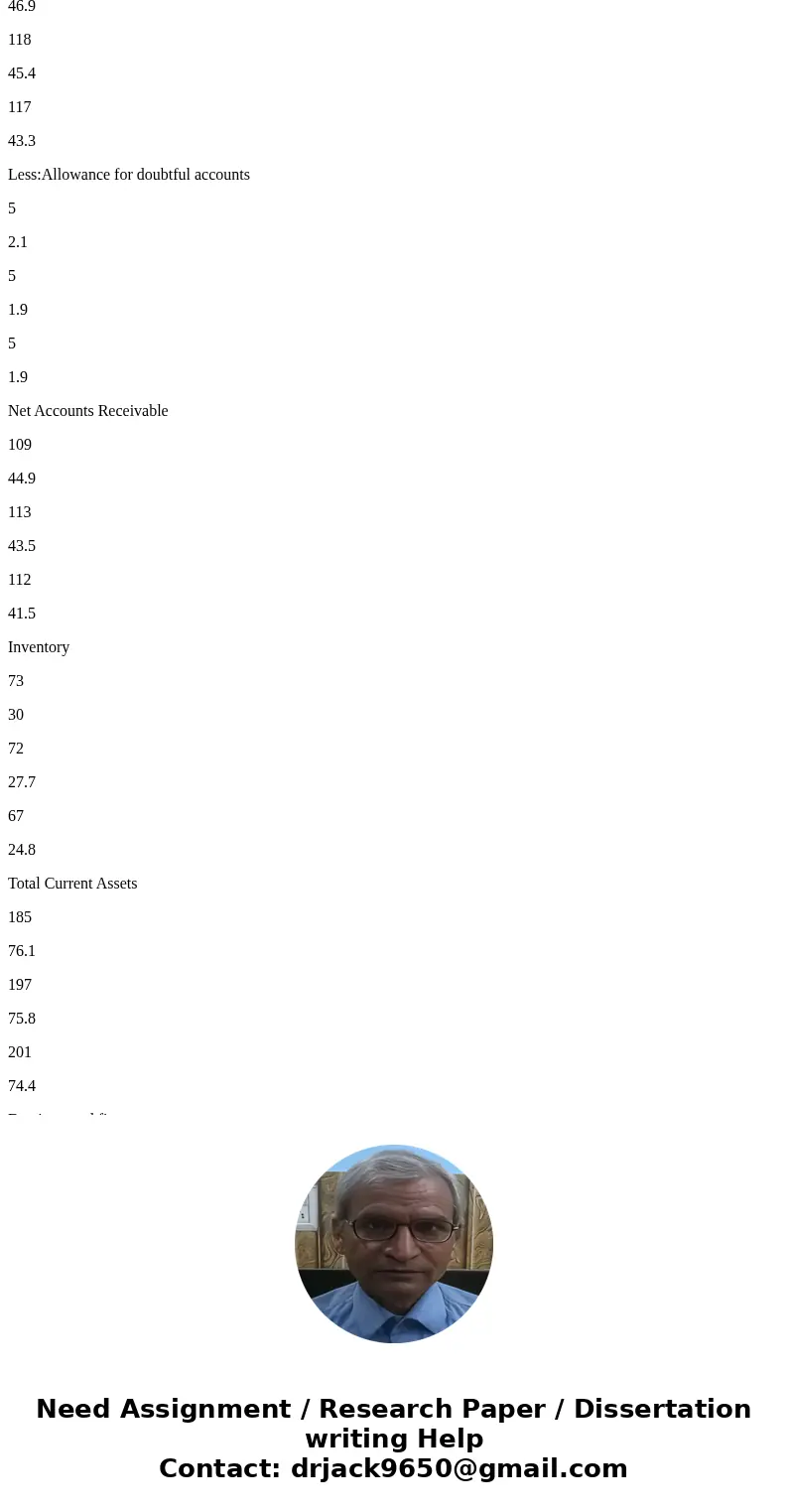
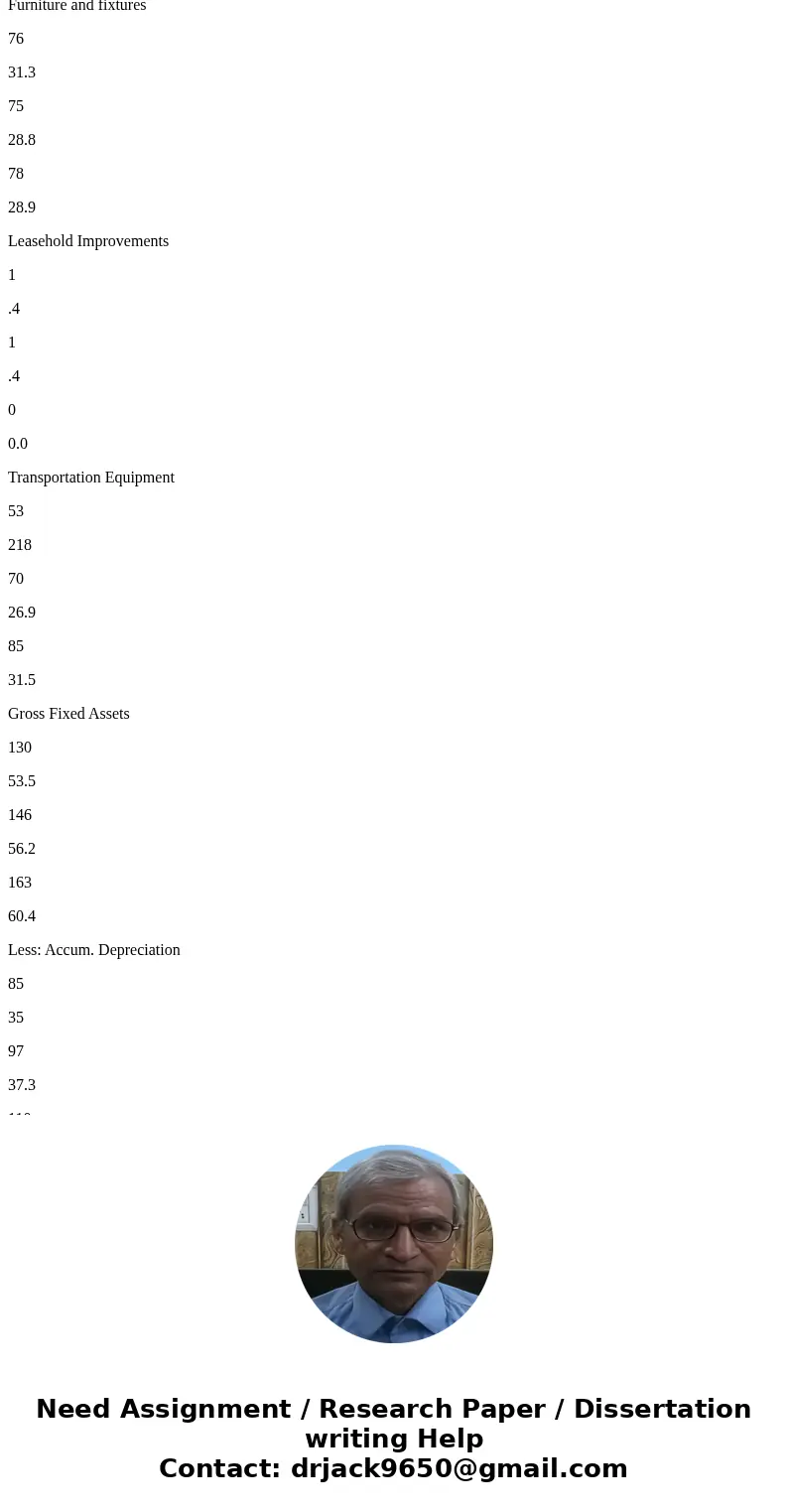
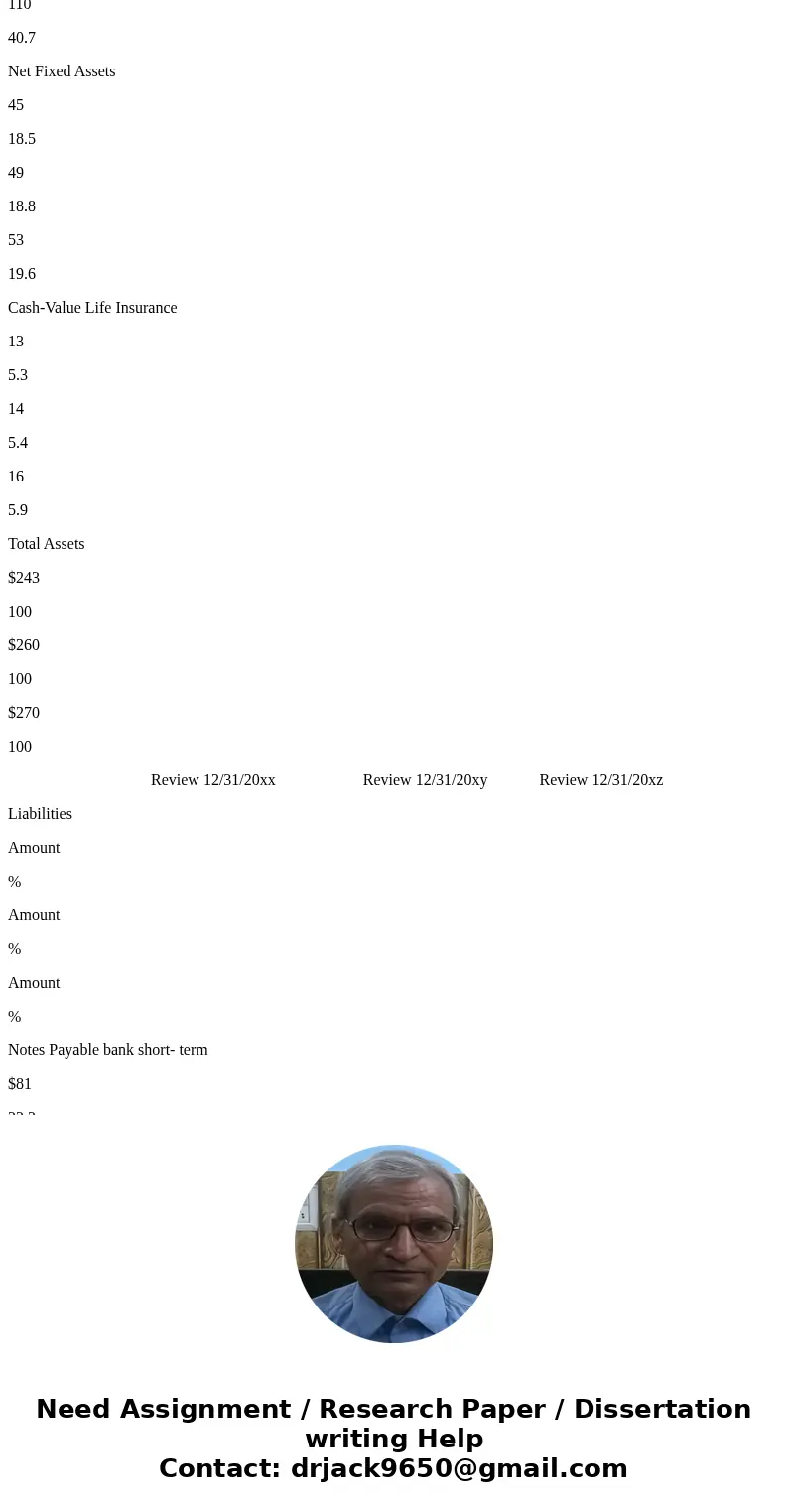
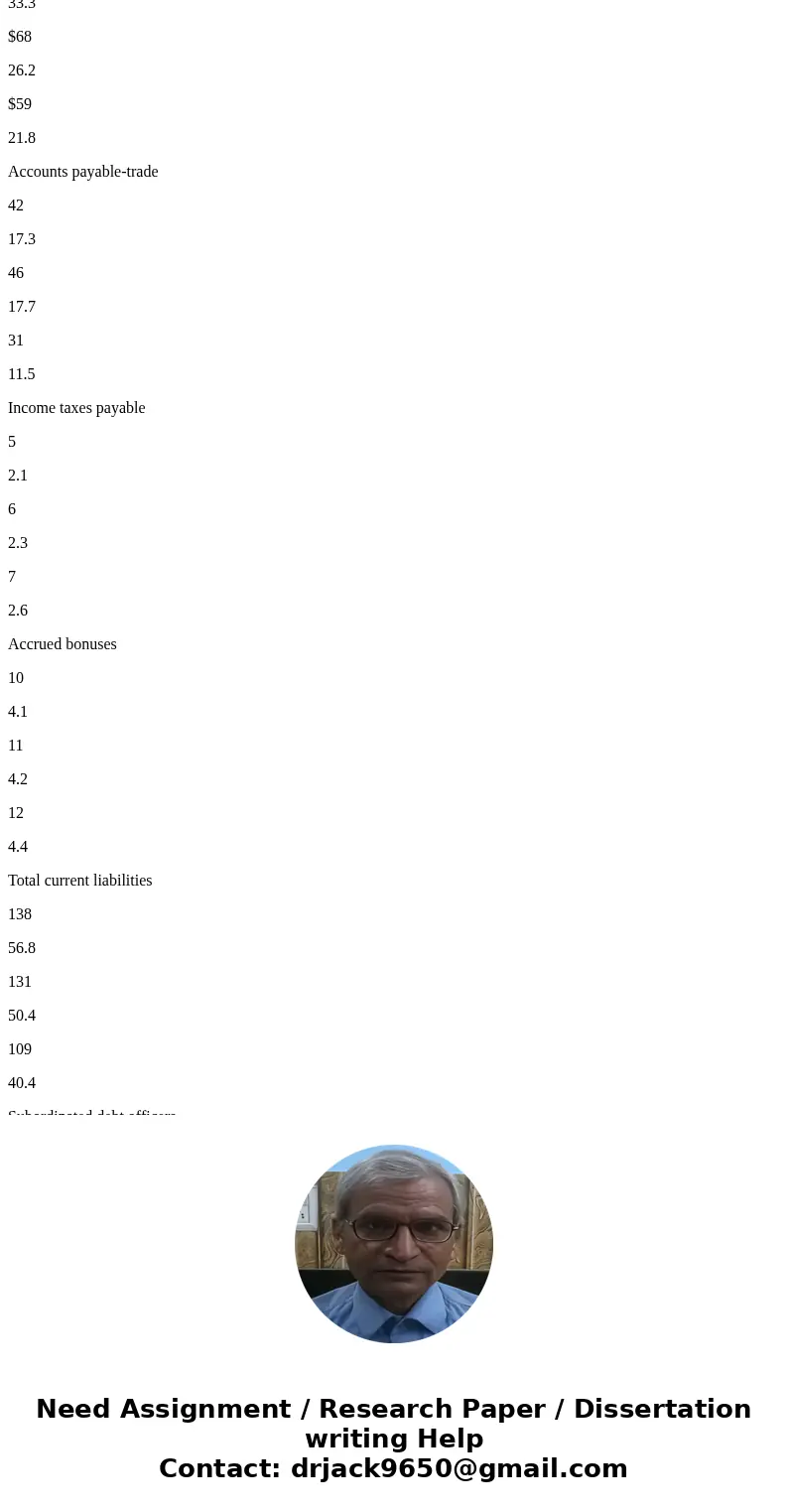
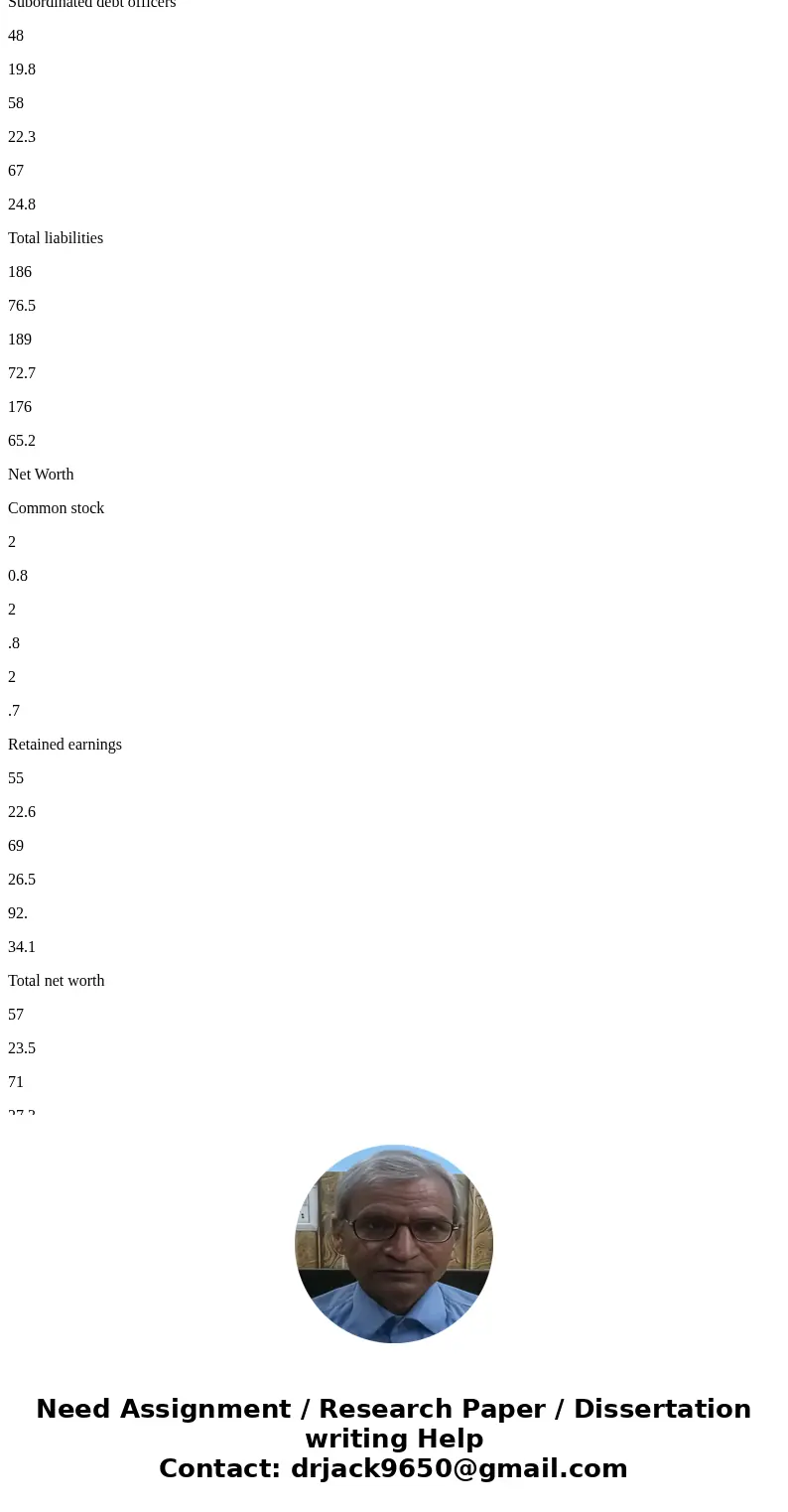
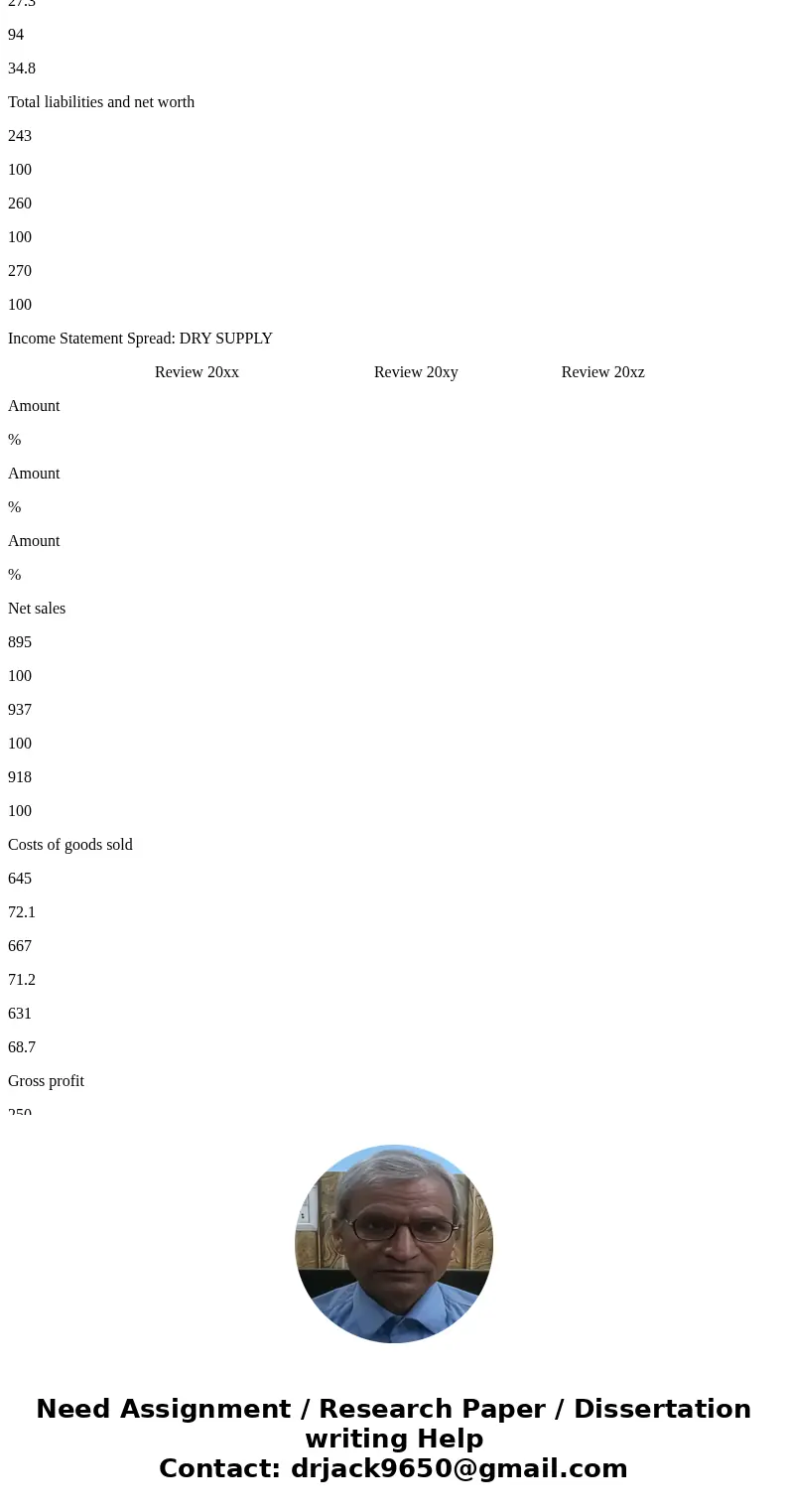
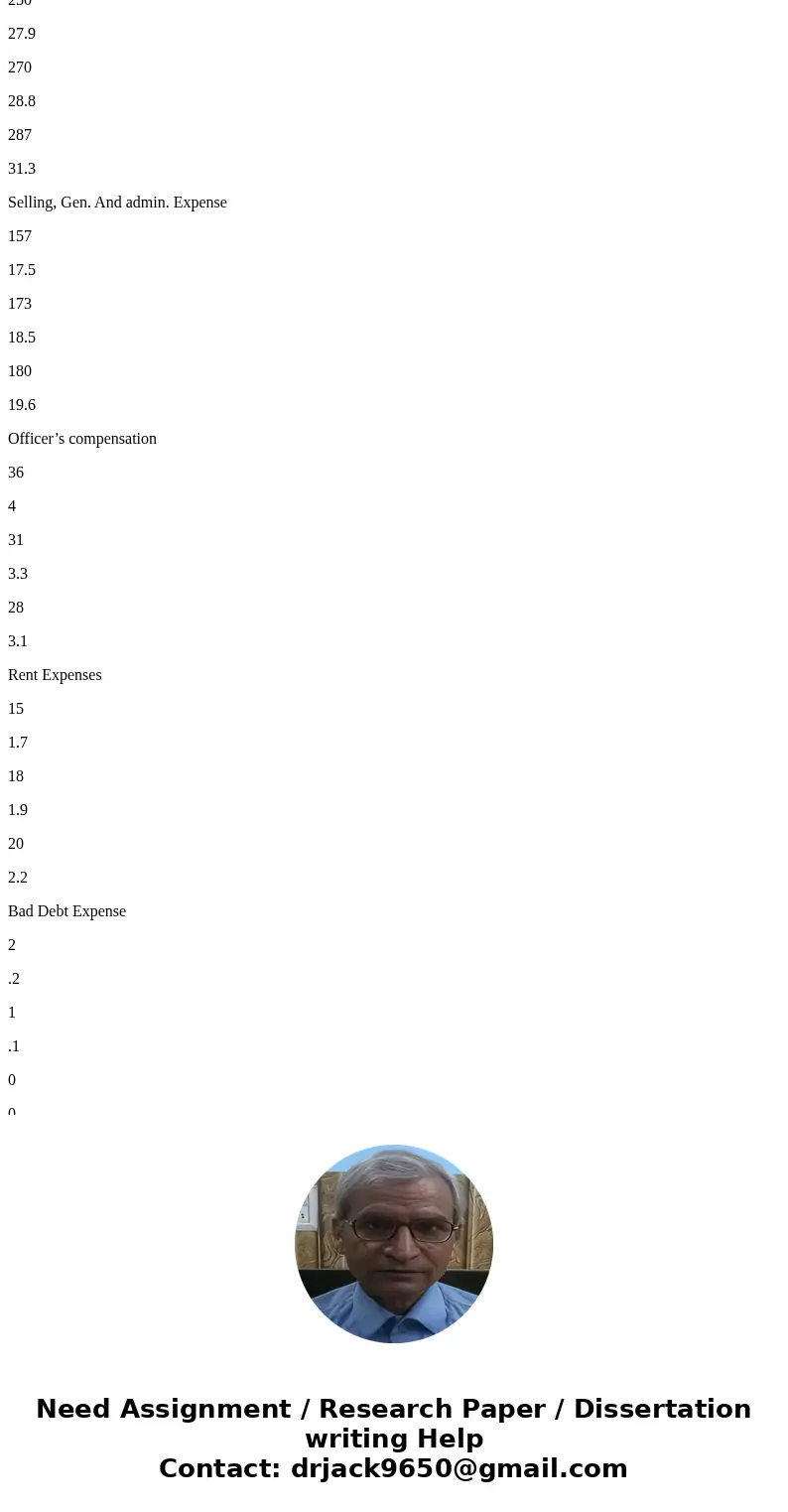
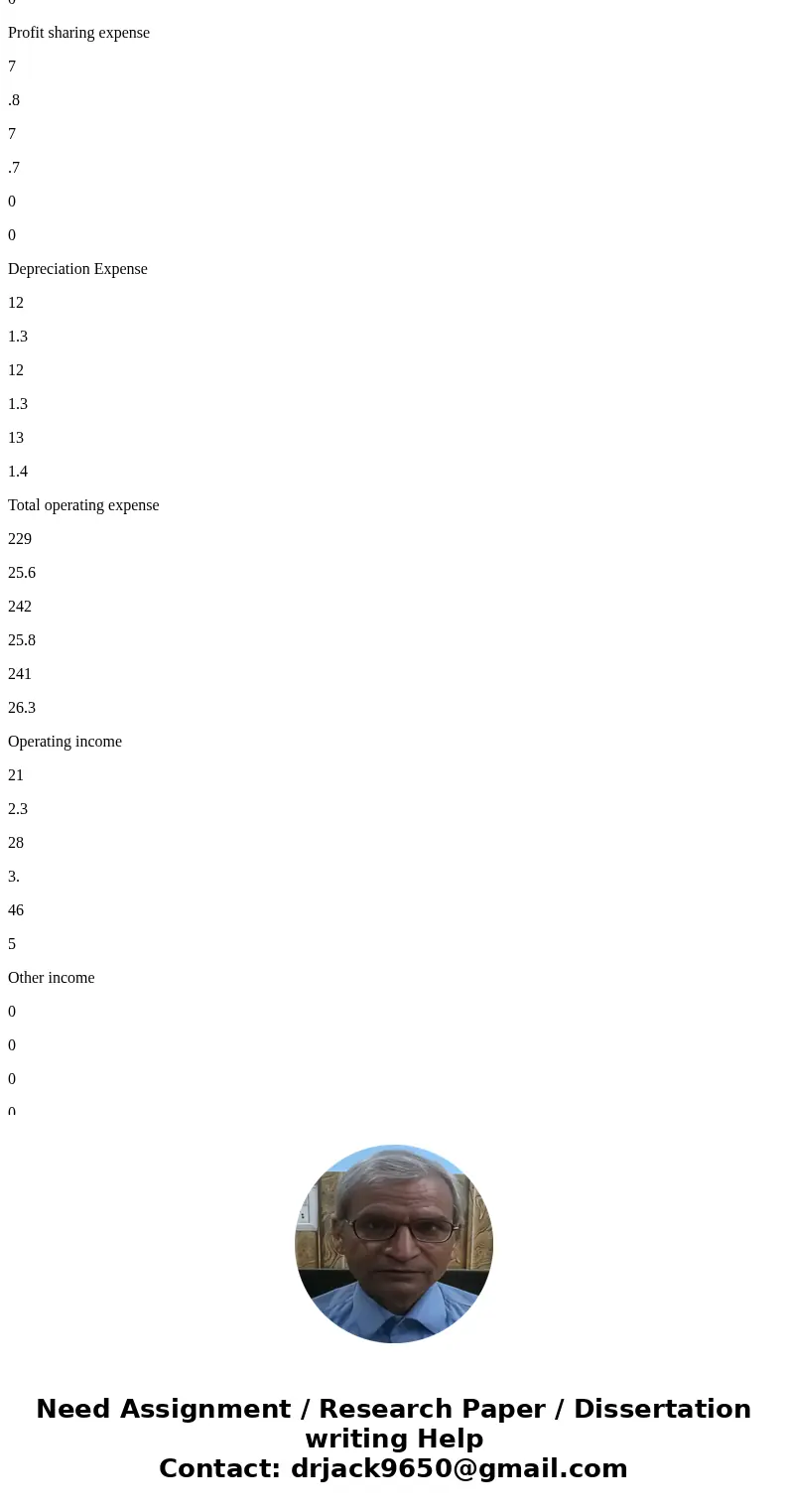
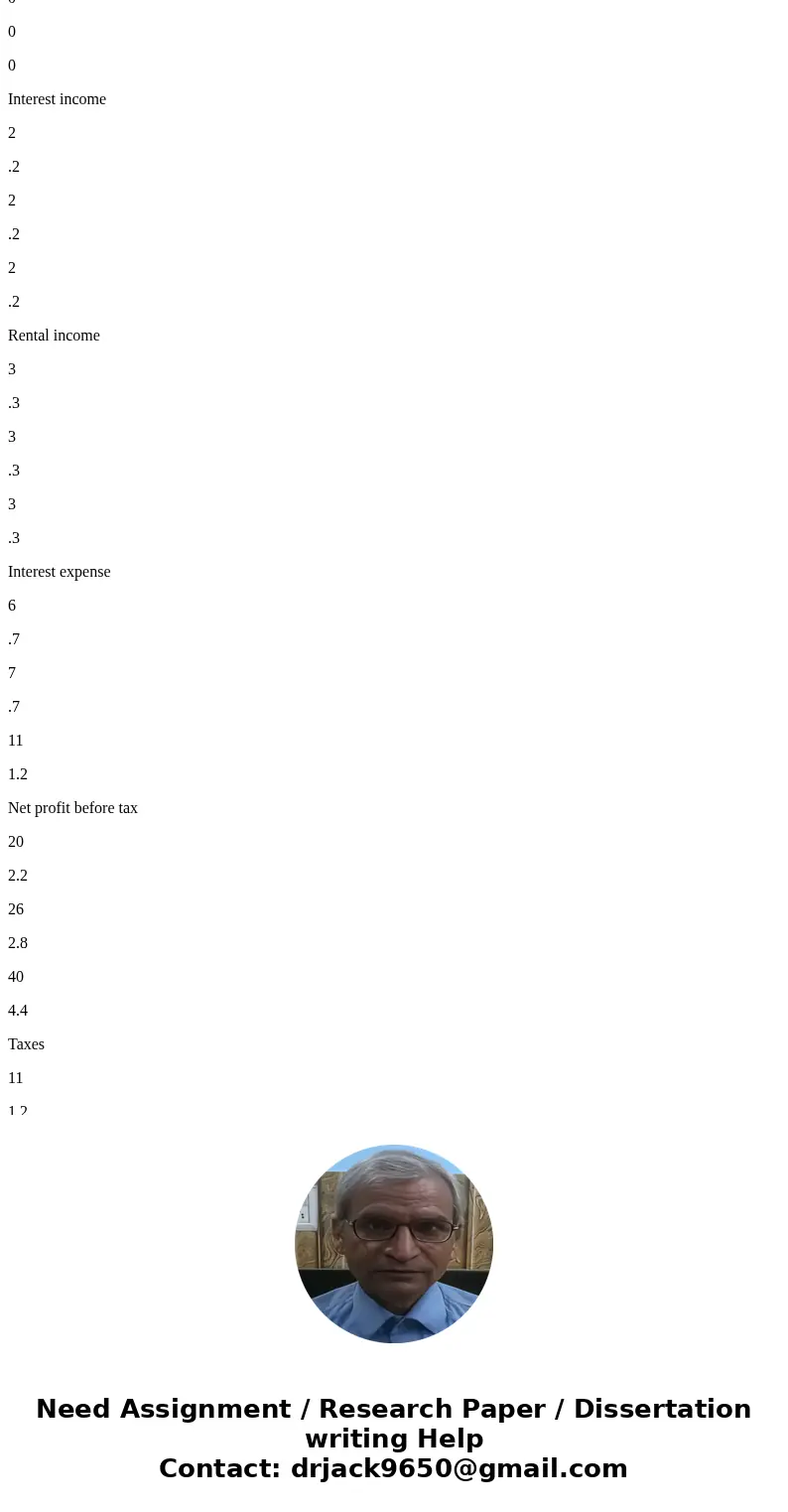
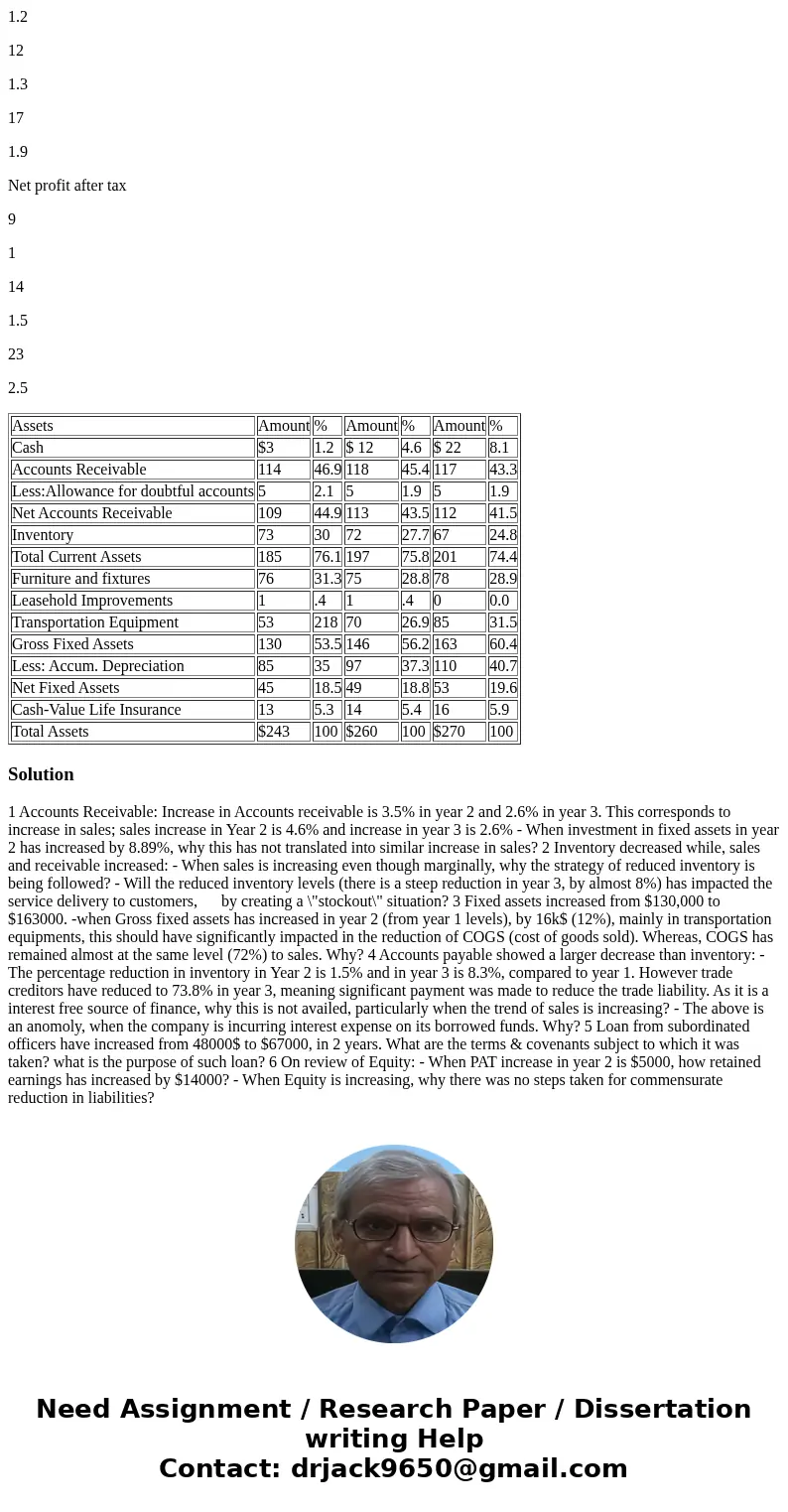
 Homework Sourse
Homework Sourse